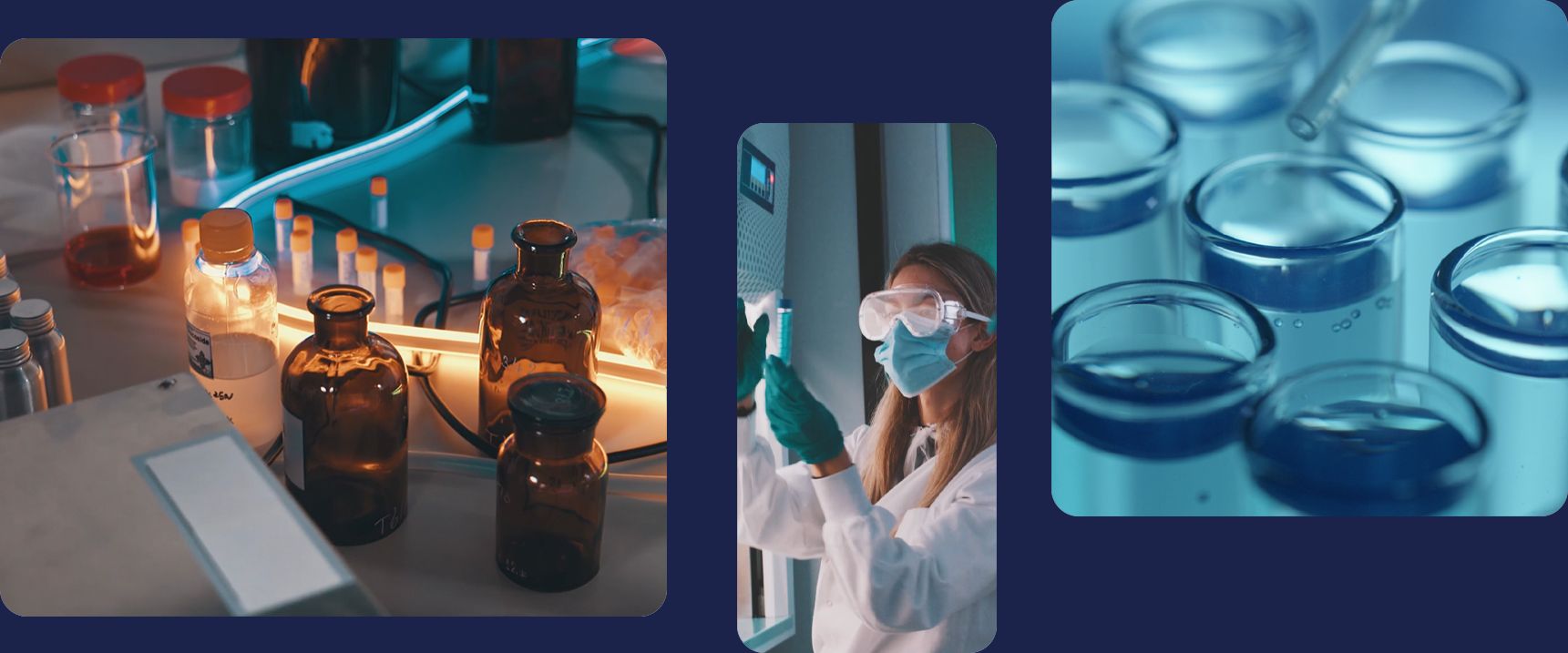Analysis of the acute irritant or corrosive effect on the eyes – OECD Test 405
Description
The OECD 405 test is an international reference method used to assess the irritant or corrosive potential of a chemical substance on the eyes. Defined by the guidelines of the Organisation for Economic Co-operation and Development (OECD), this standardized method provides essential data for regulatory classification and the protection of human health.
It allows us to determine whether a substance, whether liquid, solid, or aerosol, can cause eye irritation, injury, or corrosion after direct contact. The results obtained are used, in particular, to meet the requirements of CLP Regulation (EC) No. 1272/2008 and international regulations relating to chemical safety (REACH, OCSPP, CIMAP, GHS, etc.).
Objective and principle of the test
The OECD 405 test aims to assess the ocular tolerance of a substance and to classify its degree of irritation or corrosion.
The study is generally carried out on the albino rabbit, the reference species for this type of test.
The protocol involves applying a single dose of the substance to be tested into the conjunctival sac of one eye, with the other eye serving as an untreated control. The dose and application conditions depend on the nature of the product.
If no corrosive effect is observed during the initial test, a confirmation phase is carried out on two additional animals, sequentially, to confirm the observed response.
Methodology and observations
Observations are made at different intervals – 1, 24, 48, and 72 hours after application – and can continue for up to 21 days if lesions persist.
The parameters studied include conjunctival erythema (redness), chemosis (swelling), corneal opacities, ulcerations, and lacrimal discharge.
The results are scored according to an irritation scoring system that takes into account the nature, severity, and reversibility of the lesions.
To minimize animal suffering, OECD guideline no. 405 recommends the use of topical anesthetics and systemic analgesics during and after the test.
Classification of observed effects
The substances are then classified according to their irritant potential:
- Non-irritating: no significant lesions or totally reversible in less than 72 hours.
- Eye irritant: moderate inflammation, reversible within 21 days.
- Corrosive or causing serious damage: persistent opacity or destruction of eye tissues.
This classification allows us to determine the hazard category of the product:
- Category 1: Causes serious eye damage.
- Category 2: Causes eye irritation.
Regulatory and toxicological interest
OECD Test No. 405 plays a central role in regulatory toxicology. The data collected are used in the context of:
- REACH and CLP registrations.
- Safety assessments for cosmetic, pharmaceutical or household products.
- Biocidal and phytosanitary dossiers.
- Risk assessments for the transport of dangerous goods (UN, ADR, CIMAP).
The results of this test guarantee the safety of use and legal compliance of the products placed on the market.
Alternative methods and ethics
To reduce the use of animal testing, the OECD recommends using validated in vitro or ex vivo methods before any in vivo study, such as:
- OECD No. 437: Test on isolated bovine cornea (BCOP).
- OECD n°438: HET-CAM test on chorioallantoic membrane.
- OECD No. 492: Eye irritation test on a reconstructed human cornea model.
- These alternative methods allow for a reliable and ethical assessment of irritant potential, while respecting regulatory requirements.
YesWeLab Expertise and Support
At YesWeLab , we offer OECD test #405 implementation through our network of ISO 17025 accredited and GLP (Good Laboratory Practice) certified partner laboratories.
Our experts will guide you in choosing the most suitable evaluation strategy for your matrix (in vitro, ex vivo, in vivo), preparing reports compliant with IUCLID regulatory formats, and providing scientific interpretation of the results.
Thanks to the YesWeLab digital platform, the management of your toxicological tests is centralized: quote request, real-time monitoring, receipt of reports and personalized scientific support.
Further analyses recommended
For a complete assessment of a product's toxicological and irritant profile, YesWeLab also recommends:
- OECD Test No. 404 – Skin Irritation/Corrosion
- OECD Trial No. 437 – BCOP, in vitro ocular irritation
- OECD Essay No. 438 – HET-CAM
- OECD Test No. 439 – In vitro skin irritation
These additional tests make it possible to determine the overall irritant profile of the chemical substances and to ensure their compliance with REACH and CLP requirements.

